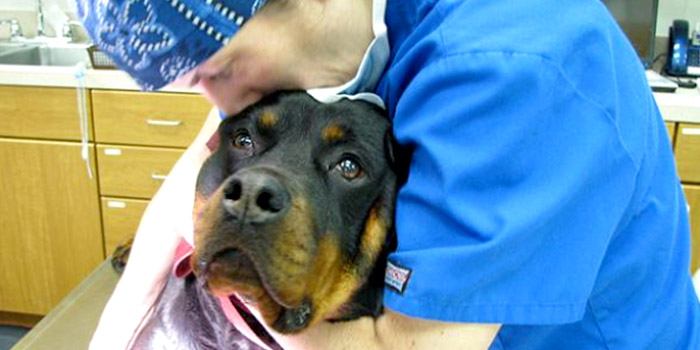

Alternatives to traditional spay and neuter are here to stay!
(A condensed version of a longer article by our Dr. Rastetter published in several national breed publications.)
For many years the decision to neuter or leave a dog intact has rested on a foundation of science, dogma, and culture. Several recent peer-reviewed studies based on large populations deserve special attention. In those studies, researchers examined how sex hormones influence risk for certain cancers, orthopedic problems, and/or behavior problems. What they found was that, for breeds such as Golden Retrievers, Labrador Retrievers, Rottweilers, and Viszlas, the benefits of keeping sex hormones may outweigh the health risks of removing them through traditional spaying and neutering.
However, the authors of some studies expressed cautions: that the results may not be applicable to other breeds, that spaying and neutering has greatly reduced pet overpopulation and subsequent euthanasia rates, and that there are well-done studies showing benefits of traditional spaying and neutering with respect to other health and behavior issues.
For female dogs, prevention of two medical conditions—pyometra (infected uterus) and mammary cancer – is often cited as reason to spay.
A neutered male dog is less likely to roam, engage in aggressive behavior toward other dogs, urine mark, and mount.
Bacterial infections of the prostate can be life threatening and are more common in intact male dog than those neutered.
Hormone driven mating behavior can lead to sexually transmitted diseases, physical injury, and a stressed out household.
And let’s not forget the bleeding mess of a female dog in heat.
So how can owners make informed decisions regarding allowing their dog to keep their sex hormones or not in light of such studies? There is no one answer regarding neutering or leaving a dog intact that is applicable to every dog and every situation. Learning which medical and behavioral conditions a particular breed is prone and how sex hormones influence those conditions is helpful. This allows a dog owner to evaluate the risks of allowing their pet to keep their sex hormones. But to avoid returning to previous overpopulation and euthanasia rates yet consider the benefits of sex hormones – a new option is emerging and offered at Pets In Stitches – sex hormone sparing sterilizations.
If an owner has excellent control of their male dogs at all times so as to be able to prevent roaming behaviors and the accompanying injuries that can result, a vasectomy (removal of a portion of the spermatic cord) instead of a traditional castration is an option. While an owner can leave a male dog completely intact, even one unintended pregnancy can add to a community’s overpopulation problem. Why not be a responsible dog owner and eliminate that risk through vasectomy? A vasectomized dog will still engage in mating behaviors and the physical act. If a vasectomy is performed, regular testicular and prostate examinations by a veterinarian should be performed to identify medical issues early.
The decision for a female dog is a bit more complicated. A female dog has three options – remaining intact, traditional spay (ovariohysterectomy), or an ovary sparing spay (hysterectomy). An ovary sparing spay involves removing the uterus and cervix, while leaving one or both of the ovaries intact for physiologic, health, and/or behavioral reasons. With an ovary sparing spay, the ovary is still functional, so, while the female cannot become pregnant, heat cycle behavior will still occur. She will still attract males and will stand to mate. A dog with an ovary sparing spay should still be confined away from males for the full heat cycle, to reduce the risk of injury from the attempted act of breeding and sexually transmitted diseases. By removing the uterus, the life-threatening risk of an infected uterus is eliminated. Owners must stay alert to this possibility of mammary tumors—the only significant health risk remaining after a hysterectomy, as their dog ages, with regular examinations.
No perfect study examining the removal of the sex organs’ effects on all breeds, all medical conditions, and all unwanted behaviors can be performed. Thus, no single sterilization recommendation can fit every dog and owner however, the new sex hormone sparing sterilizations at Pets In Stitches represents an exciting opportunity to individualize such medical decisions yet still prevent reproduction.
—
If you’d like to read the entire published article, click here.
